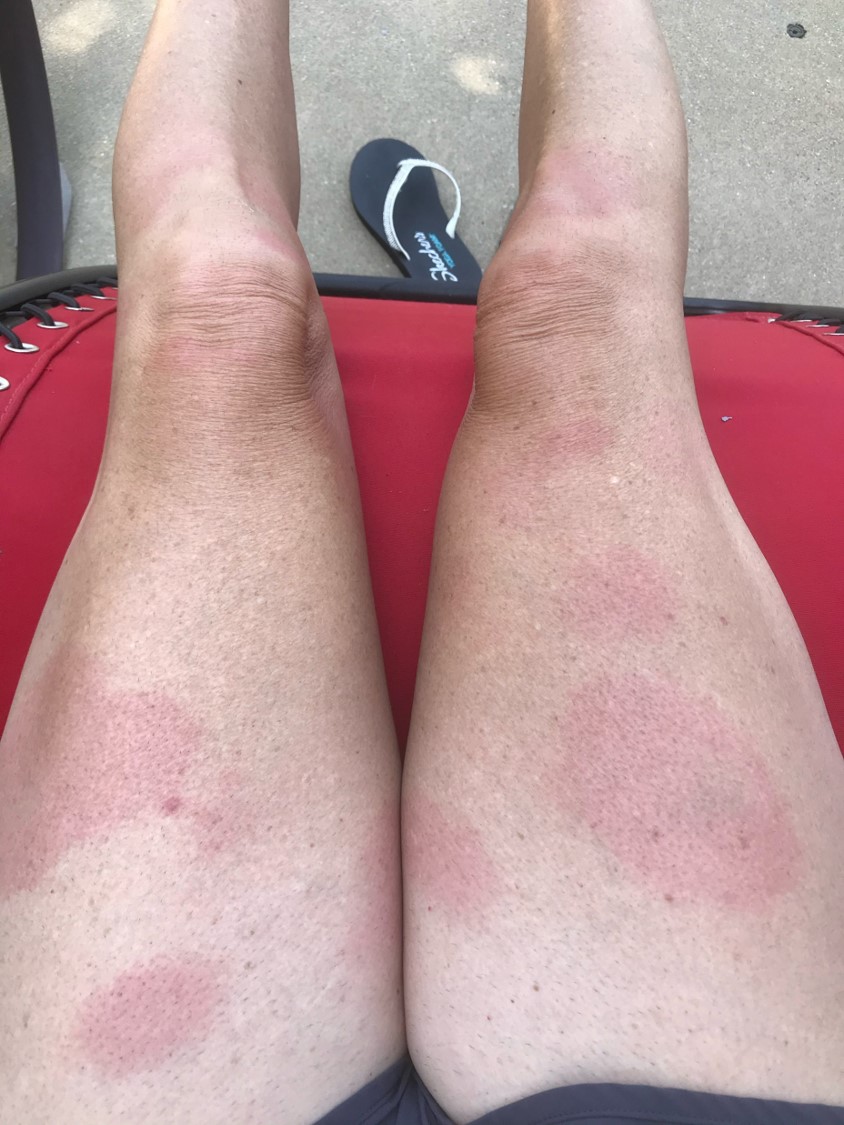Case Presentation: A 54-year-old woman presented with severe neck pain and high fevers starting three weeks after spending a weekend in Burlington, Wisconsin. She had a wide breadth of symptoms including Bell’s palsy, shooting leg pain, arm weakness, tinnitus, jaw tightness, feeling like she had “sand in her eye,” and episodes of mental lucidity with inability to express herself with words. She also endorsed intermittent chest palpitations, general truncal edema, and “golfballs” under her armpits. The patient reported that she had a rash all over her body that began as “dime sized” and progressed to large macular lesions.It was two weeks since the onset of her first symptoms that she presented to an outside hospital. A spinal tap showed elevated proteins and low glucose. CSF serology was positive for Borrelia burgdorferi, and was confirmed with western blot with bands present for IgG: 93, 58, 41, 39, and 18, and bands present for IgM:41, 39, and 23. Interestingly, serologies of venous blood were also significant for RMSF (Rocky Mountain Spotted Fever) with IgG antibody titers of 1:1024, IgM (<1:64), and Typhus IgG (1:1024) and IgM (1:256). Patient was discharged on doxycycline and prednisone but failed to improve. Patient was then treated at our hospital where she no longer had a rash, and treatment with doxycycline and ceftriaxone led to resolution of symptoms. Repeat convalescent serologies were sent two weeks later and yielded the same results for both RMSF and Typhus.
Discussion: Wisconsin is endemic for Lyme disease, anaplasmosis, ehrlichiosis, and babesiosis, as these diseases are commonly carried by the same vector, the Ixodes scapularis tick. However, Rickettsia diseases are rare in Wisconsin. Wisconsin has only had one reported endogenous case of RMSF back in 2018 which resulted in a fatality. Rickettsial typhus is rare in the USA, although there had been outbreaks of R. prowazekii east to Pennsylvania due to the wide distribution of an intermediate host, the Northern and Southern Flying squirrels.Consistent with her serologies, the findings first suggested a case of disseminated Lyme as she had symptoms of Bell’s palsy and a characteristic macular rash. However, Rickettsial serologies suggested that the patient also had coinfections RMSF and/or Typhus. Serologies can be cross reactive between Rickettsia species in the spotted fever group, and although there has been no good data if Rickettsia rickettsii and Rickettsia typhi can cross react, R. typhi and R. prowazekii serologies have significant cross reactivity. Our patient unlikely had acute RMSF as she was not originally treated aggressively for RMSF and survived. Although her RMSF IgG was positive, it was most likely a result of cross reaction with a different, non-lethal Rickettsial infection.
Conclusions: In conclusion, it was most likely that our patient experienced acute disseminated Lyme disease with meningitis, superimposed on an older undiagnosed Typhus infection as her repeat serologies remained the same. This patient demonstrated a complex disease presentation coupled with a confusing set of serologies that were only clarified by understanding the epidemiology of Rickettsial disease in the USA.


